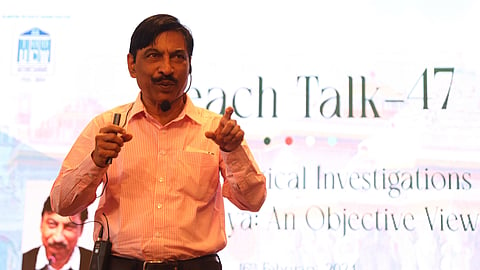

HYDERABAD: Former Regional Director (North) of the Archaeological Survey of India (ASI) KK Muhammed on Friday said that the Muslim community should willingly hand over the sites at Gyanvapi and Mathura to Hindus.
The Padma Shri awardee said that going beyond these sites, however, will create issues. Speaking to TNIE, he said that amendments to the Places of Worship (Special Provisions) Act, 1991 should be considered to ensure this.
Muhammed, who was part of the ASI team that examined the site at Ayodhya in 1976–77, delivered a talk titled ‘Archaeological Investigations at Ayodhya: An Objective View’ in the city.
He emphasised that people should accept the fact that mistakes were made in the past and that the present-day Muslim community is not responsible for those mistakes. The Hindu rulers of the past demolished Buddhist and Jain temples to construct Hindu temples, he added.
Delving into the archaeological findings in Ayodhya, the former ASI regional director, said that the team found the ‘poorna kalasha’ engraved on 12 pillars at the site. This is one of the ‘asht-mangala chinhas’ (eight auspicious symbols) associated with temples, he added.
According to Muhammed, the team further found ruined Hindu sculptures in the mosque. Additionally, they found terracotta figures of men and women. These figures could not have been associated with a mosque as the depiction of human figures is haram (prohibited) in Islam, he added.
Muhammed further cited accounts of travellers such as Thomas Herbert and C Mentelle who have written about Hindu worship at the site. Mughal emperor Akbar also issued coins with Ram and Sita engraved on them, he added. He also shared anecdotes from excavations in other sites such as Hastinapura and Dwaraka.